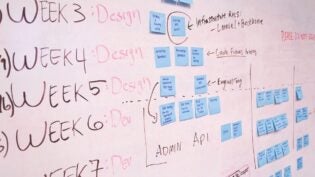Unemployed? Here Are 6 Ways to Keep to Your Routine (& Sanity)
By: Jenna Cyprus

As of writing this article, a shocking 36 million American workers have filed for unemployment as a direct result of the COVID-19 virus and the subsequent shutdowns and stay-at-home orders. That number represents almost 20 percent of the entire country’s workforce – or nearly 1 in 5 people. It’s a staggering statistic, no matter how you slice or dice it.
And while the hope is that this is a temporary blip on the radar, the reality is that not every laid off worker will return to their job over the next few weeks or even months. Even after the economy opens backup, there will still be those who will struggle to find work.
Whether you’re furloughed for a few weeks or out of work for many months, it’s important that you keep a daily routine.
6 Tips for Keeping a Daily Routine
Structure is good and can help you stay organized, motivated, productive, and balanced. Here are some suggestions regarding how you can stay on track:
- Master Your Mindset
If you’ve never studied Cognitive Behavior Psychology (CBP), now’s a good time to do some light reading. It’ll fundamentally change the way you approach your day-to-day life, laid-off or otherwise.
“CBP explains that your thoughts create your feelings and your feelings drive your actions, which ultimately create your results in all parts of your life,” business educator Marah Elizabeth writes.
In your present context, CBP can help you master your mindset and look at this bleak situation through a more positive lens. As a result, you’ll be more hopeful and productive.
- Set Your Alarm
As tempting as it is to sleep in – especially if you have no children or work responsibilities – it’s important that you set your alarm. In fact, this is integral to your success during this period.
You don’t have to wake up at 5:30 every morning, but you should do your best to wake up sometime before 8:30. This will keep your circadian rhythm in sync for whenever you do return to work.
- Develop a To-Do List
Every day should begin with crafting a to-do list. The key is to avoid making the list too sparse or too lengthy. Somewhere between three to seven tasks is a good place to start.
Some tasks will be small – unload the dishwasher – and others will be more extensive – submit five job applications. The point is to create actionable items that dictate the flow of your day. Not only this, but it also gives you something to cross off and feel good about when your head hits the pillow at night.
- Follow the Same Morning Routine
You don’t have to follow the same daily routine to the T. You should, however, implement the same morning routine.
A morning routine refers to how you spend the first 60-90 minutes of your day. Your routine might consist of waking up, making coffee, reading a book, checking your email, and going for a walk. If this was your routine prior to being laid off, keep it the same. Consistency provides comfort – something we can all use a little more of right now.
- Invest in Self-Care and Hygiene
Self-care and hygiene are more important than ever. Take the time to care for your own personal needs. It’ll make you feel clean, dignified, and physically attractive.
For men, this means continuing to shave on the same scheduled routine. (This might even be a good chance to learn how to shave better.) For women, this means following the same daily beauty routine (even if you aren’t leaving the house). The comfort and predictability of these habits will help you feel in charge of your experience.
- Exercise 2X Per Day
Set a goal of 30 minutes of exercise in the morning and another half hour in the afternoon. This gives you two major activities to plan your day around. It could be something simple like walking around the neighborhood with your kids, playing basketball in the driveway, or following a YouTube exercise video in your living room.
Maintain Structure and Organization
You don’t have to plan out every minute of every day, but you should have a plan for each day. At the very least, create two or three anchor points throughout the day – like meals or exercise – to establish a workable framework. Not only will this keep you more productive today, but it’ll also make the eventual transition back to work much easier and more palatable.
5179 Views












